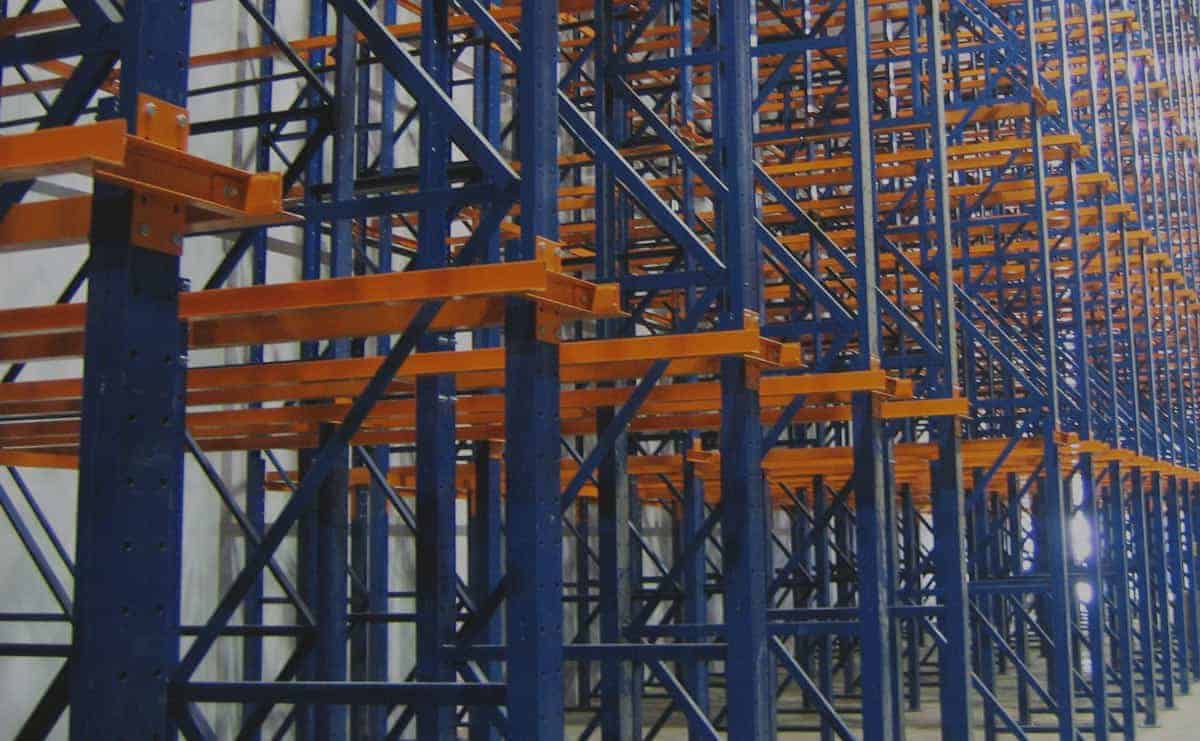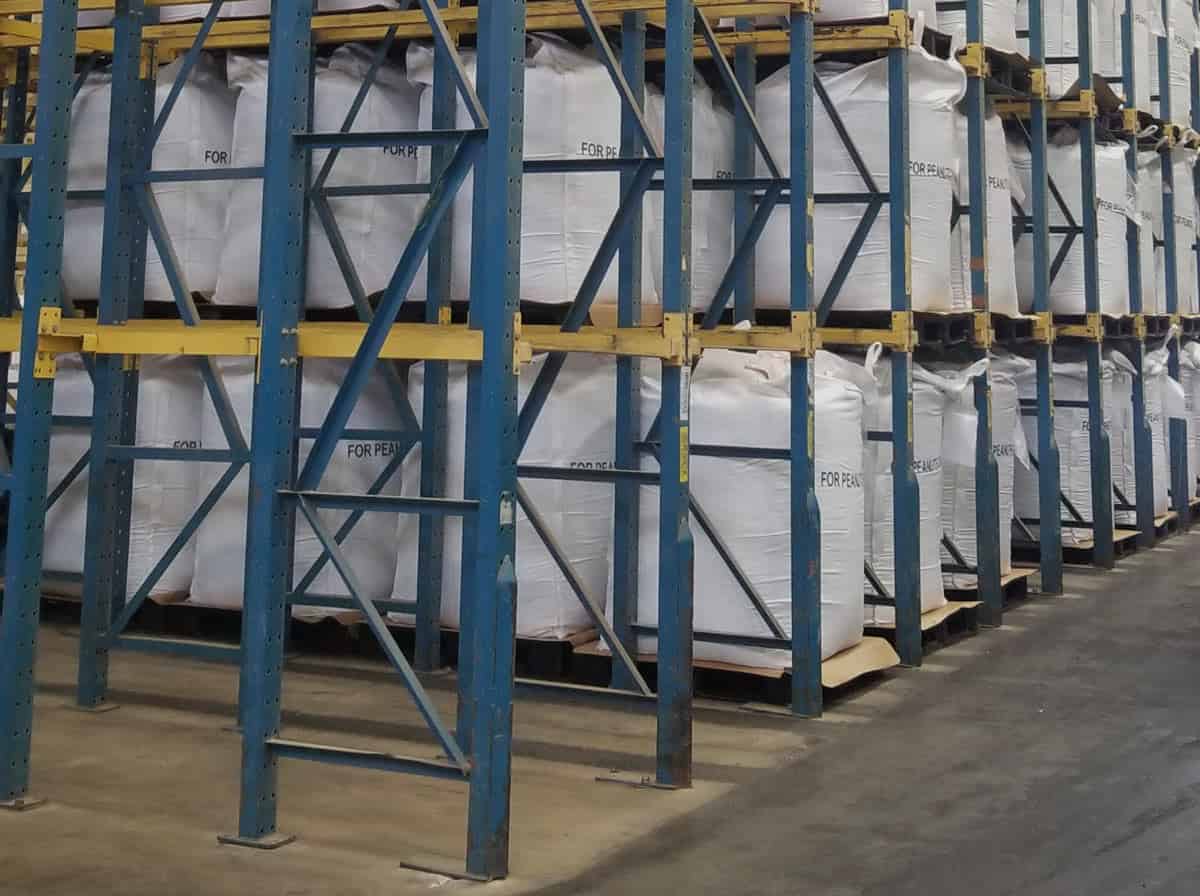Drive-In Racking Can Increase Storage Capacity by 75%
There is no shortage of racking solutions to choose from for your warehouse or fulfillment center. Perhaps the most challenging part is determining which racking system is best for your specific warehouse. Selecting the wrong racking system can dramatically impact productivity levels and, ultimately, your profits.
There are several factors, besides the inventory itself, to consider as you select a racking system.
The physical location. You need to know the available square footage, the building’s volume, and the type of construction.
Material handling equipment to be used. The size (dimensions) of the forklifts and other equipment used.
Pallets. Standard or custom-sized pallets will determine the spacing for racking components.
Durable or expiry products. Will determine the desired loading option of FILO or LIFO.
Product flow. The movement of your inventory through your warehouse will determine rack or shelving locations.
Many racking options rely on the square footage of the building. The greater the available area, the more shelving you can install to increase storage capacity. The trade-off is that more units decrease the space open for aisleways, equipment movement, and employees.
The good news is, one racking option can increase your available storage by up to 75% over traditional selective rack systems or floor stacking options.

Even a small warehouse can maximize their inventory storage by going vertical with a drive-in or drive-through rack system. These systems convert empty overhead air space into organized inventory storage, freeing up valuable floor space for greater accessibility and product flow.
Drive-in and drive-through racks are exceptionally well suited for warehouses that handle large amounts of palletized inventory across a limited number of SKUs. And they are the preferred choice for refrigerated and frozen storage since their effective cubing lowers utility costs.
Both options are cost-effective and are fully adjustable for your specific warehouse and inventory needs;
- The bolt-together assembly makes the installation process (and any adjustments or maintenance) fast and straightforward.
- The bays (aisles) match the pallet size, which makes cubing your inventory even more manageable.
- The rack depth can accommodate from 2-10 pallets of product inventory.
- Racks can be configured to a maximum height of 40′ and can attach to roof structure for extra strength and rigidity.
- Can be configured for FILO and LIFO inventory rotation.
- Reducing the number of access aisles required increases your available storage capacity.
- Available in a wide variety of ratings, widths, and heights to fit virtually any warehouse configuration or layout.
With benefits like these, it’s no wonder that drive-in and drive-through racking systems are such a popular choice for warehouses and distribution companies across the country.
Besides the benefit of 75% or more usable storage capacity, this racking system is available in two different configurations for increased flexibility.
Drive-in racking
This arrangement provides a single entry and exit point for forklifts (and other material handling equipment) to access the inventory.
Vertical components connect using a rail system, which provides support for the pallets of inventory.
This system is an excellent option for durable goods without product rotation or expiry concerns. The drive-in rack is limited to a LIFO (Last In First Out) loading option because of the single access point. Inventory rotation is possible but requires the complete “unloading” of the rack to do so.

Drive-through racking
Just like drive-in rack, drive-through racks assemble back-to-back to create lanes in the actual rack system for the forklifts to use. Because both ends of the aisle are open, one end can serve as the entry point, and the other is the exit point.
For this option, the vertical components (upright frames) connect using side rails. Pallets can then slide along the rails as new inventory is loaded.
This configuration allows for FIFO (First In First Out) loading, the preferred option for products with limited shelf life or expiration date concerns.
Additional Racking Considerations
Before deciding that a drive-in or drive-through rack system is the best solution for you, there are several other essential factors to consider.
These systems typically experience more physical damage than other options because the forklift drives into or through the assembly when moving inventory. As a result, some rack systems now include replaceable guides or stops. Some drive-in systems have cant legs, which are tapered columns at the bottom of the frame that minimize damage.
Your inventory life cycle and product flow help determine the number of needed racks, specific locations, and maximum heights.
The potential inventory load (weight) must match the racking system’s load capabilities and structural rating.
Forklift sizes, turning radius, and lift range must all work within the aisles created by the racking system components.
Due to the complexities of calculating all of the factors involved, you should always consult with a material handling expert before choosing a drive-in or drive-through rack system.